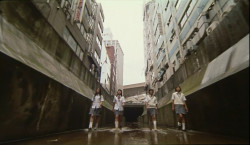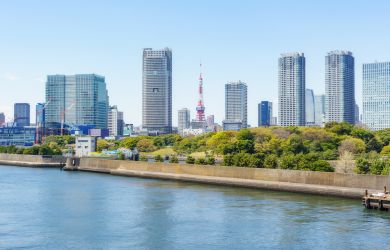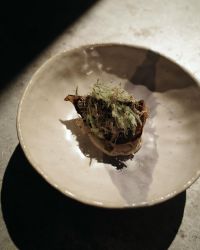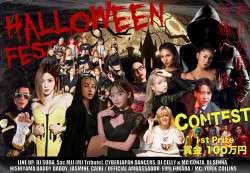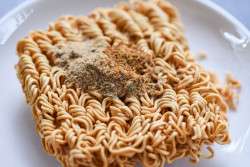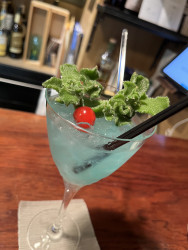
March 5, 2013
Enku’s Buddhas
Religion and art come together at the Tokyo National Museum
By Metropolis
Originally published on metropolis.co.jp on March 2013

Religious art can be something of a paradox because it serves two masters: the Muses and another, often jealous, god. Overwhelmed by a duty to express and symbolize religious truths, art can lose its expressiveness and spirit to custom and convention. Many of the Buddhist statues one encounters in Japanese temples suffer from this kind of dullness: technically impressive, didactically correct, but lacking in inspiration.
Alternatively, the artistic side may win out and religious motifs may become mere subject matter—a launching pad for the artist to show versatility, rather than conveying an inspiring message. Much of the religious art of the Italian Mannerist period—with its long-necked Madonnas—falls into this category.
Questions of how art and religion relate are raised by the exhibition “Enku’s Buddhas: Sculptures from Senkoji Temple and the Hida Region” at the Tokyo National Museum. Luckily they are answered in a positive way, suggesting that art and religion can in fact powerfully enhance each other.
Born in 1632 in the province of Mino (now Southern Gifu), the Buddhist monk Enku spent the last thirty years of his life—from 1666 onwards—travelling around the Eastern and Northern parts of Japan, practicing various forms of asceticism. This meant that he avoided the more refined parts of the country, something that seems to have benefitted his art. Far from Japan’s cultural centers, and interacting with the ordinary peasant folk, he was able to discover a unique style that fully expressed his artistic sense and religious faith, while also revealing the qualities of his material and his own character.
His Seated Ryoumen Sakuna is interesting for the way it demonstrates this artistic independence. A demonic figure mentioned in the Nihon Shoki, an 8th-century chronicle of Japanese myth and history, Ryoumen Sakuna is described as having two faces—one facing forward and other backwards, like the Roman god Janus. Enku, however, presents both faces to the viewer, heightening the sense of the being’s presence.
A good example of his “sense of the wood” is a set three figures, Standing Fudo Myo’o (Acala) With Two Child Attendants, all carved from the same log, split into a half and two quarters and then skillfully carved. Although the lines and planes that define them are all different, the same grain runs through all three figures.
A factor in his style was the speed at which he worked. Around 5,000 of his sculptures are known to survive, but it is thought that in his lifetime he carved a grand total of 120,000.
The works are typically rough-hewn, with strong elements of almost abstract stylization that suggest a rhythmic approach to the wood. This spiritual and artistic rhythm also seems to riff on the rhythm encoded in the wood by its grain, something that the exhibition’s lighting skillful highlights.
The true test of a work of art is not just its beauty, but also whether or not it gives us a sense of the person who created it. With Enku’s sculptures we are brought close not only to the mind and spirit of the man, but, in the strokes and incisions recorded in the wood, we can almost hear him at work across the centuries.
